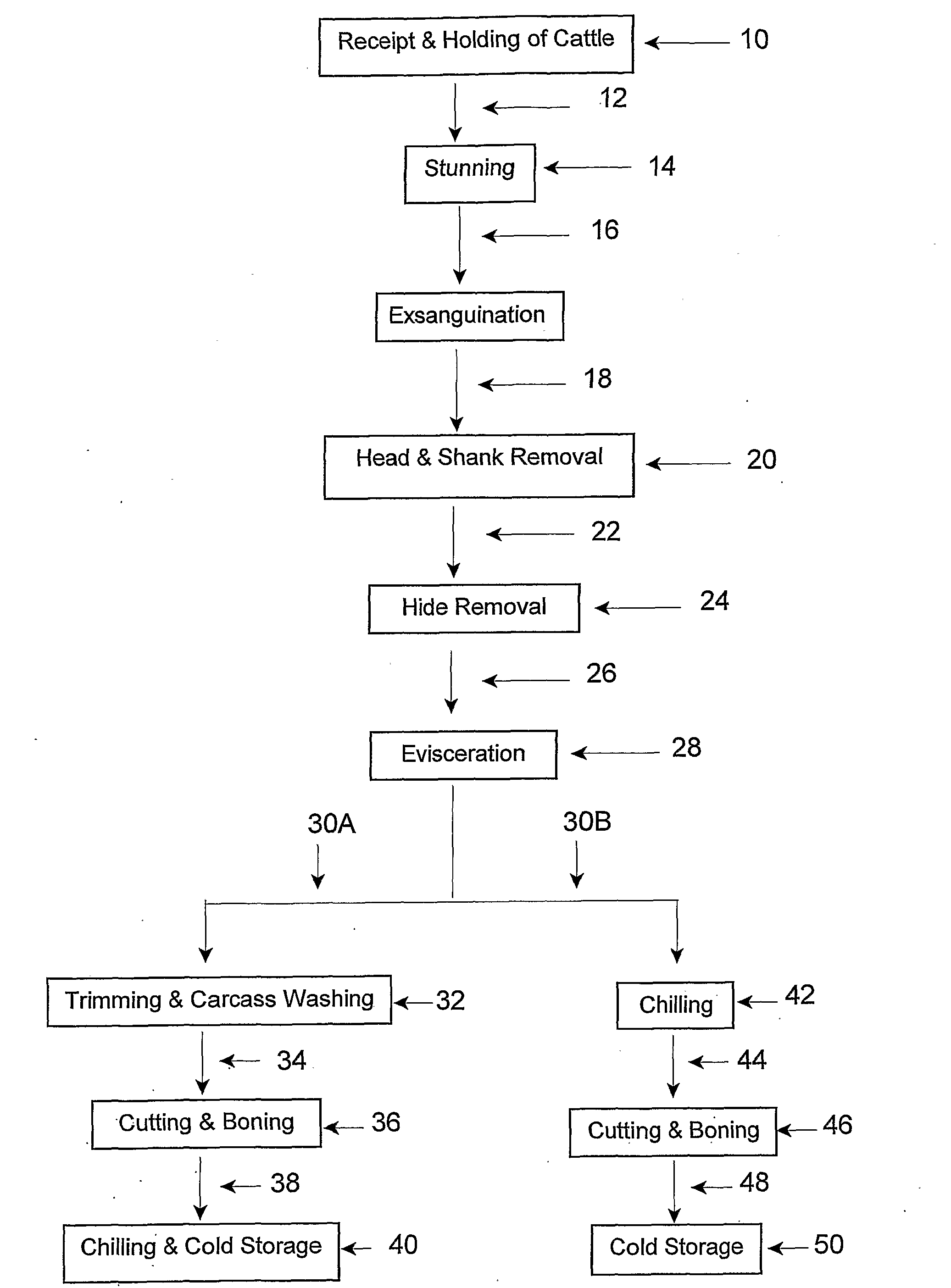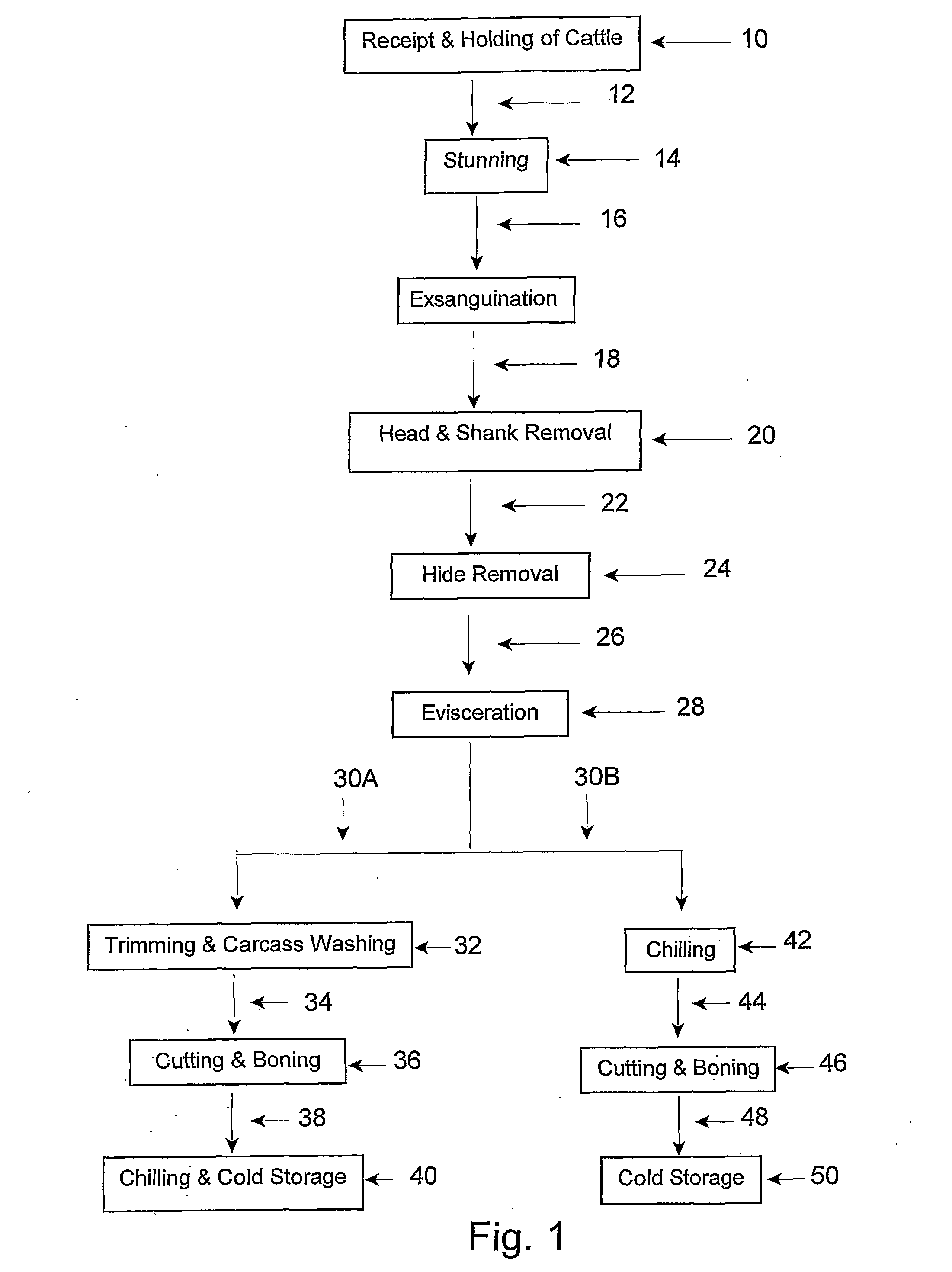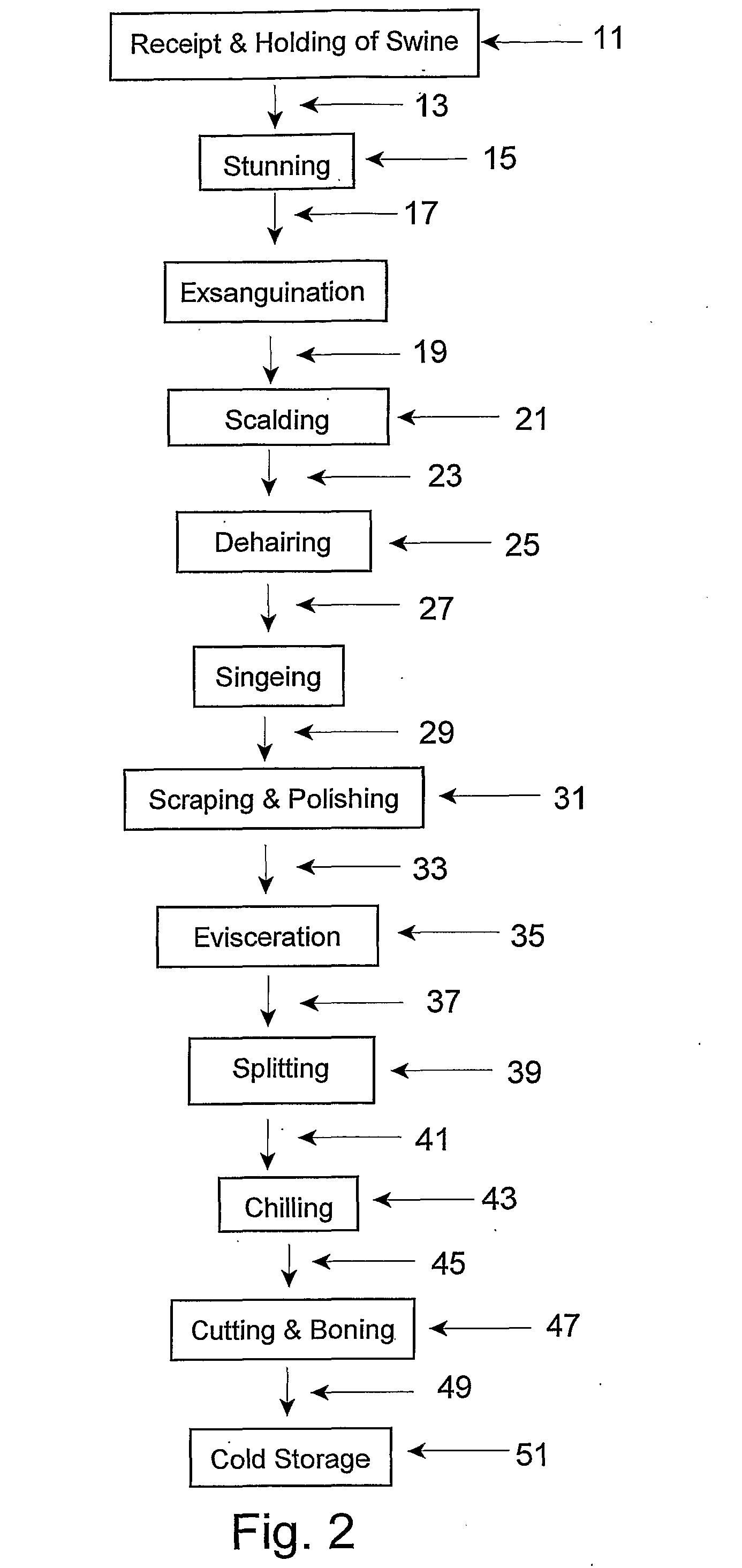Microbiocidal Control in the Processing of Meat-Producing Four-Legged Animals
a technology of four-legged animals and microorganisms, applied in the field of microorganism control in the processing of meat-producing four-legged animals, can solve the problems of unsatisfactory total elimination of bacteria from fresh raw meat, bacterial contamination of fresh meat as an undesirable, and contamination of meat and meat products, so as to reduce microbial contamination
- Summary
- Abstract
- Description
- Claims
- Application Information
AI Technical Summary
Benefits of technology
Problems solved by technology
Method used
Image
Examples
example
[0103]A study was conducted in which individual samples of raw meat were directly contacted individually with a test substance to determine the effect each such substance had on the quality of the meat. The raw meat used was top round beef. The test materials were: (a) household bleach (commercially available hypochlorite bleach solution); (b) water-diluted household bleach containing 50 ppm as chlorine bleach; (c) 2% aqueous lactic acid solution; and pursuant to this invention, (d) 92 ppm as bromine of Stabrom 909 concentrated aqueous biocide solution (Albemarle Corporation), which is a commercially-available concentrated solution useful in forming an aqueous microbiocidally-effective composition of an embodiment of this invention previously denoted as a). Individual samples of beef (approximately 30 grams each) were placed in 80 mm×40 mm crystallization dishes. Each such sample was exposed to 30.0 grams of one of the respective test materials for a period of minutes. The beef samp...
PUM
 Login to View More
Login to View More Abstract
Description
Claims
Application Information
 Login to View More
Login to View More - R&D
- Intellectual Property
- Life Sciences
- Materials
- Tech Scout
- Unparalleled Data Quality
- Higher Quality Content
- 60% Fewer Hallucinations
Browse by: Latest US Patents, China's latest patents, Technical Efficacy Thesaurus, Application Domain, Technology Topic, Popular Technical Reports.
© 2025 PatSnap. All rights reserved.Legal|Privacy policy|Modern Slavery Act Transparency Statement|Sitemap|About US| Contact US: help@patsnap.com



